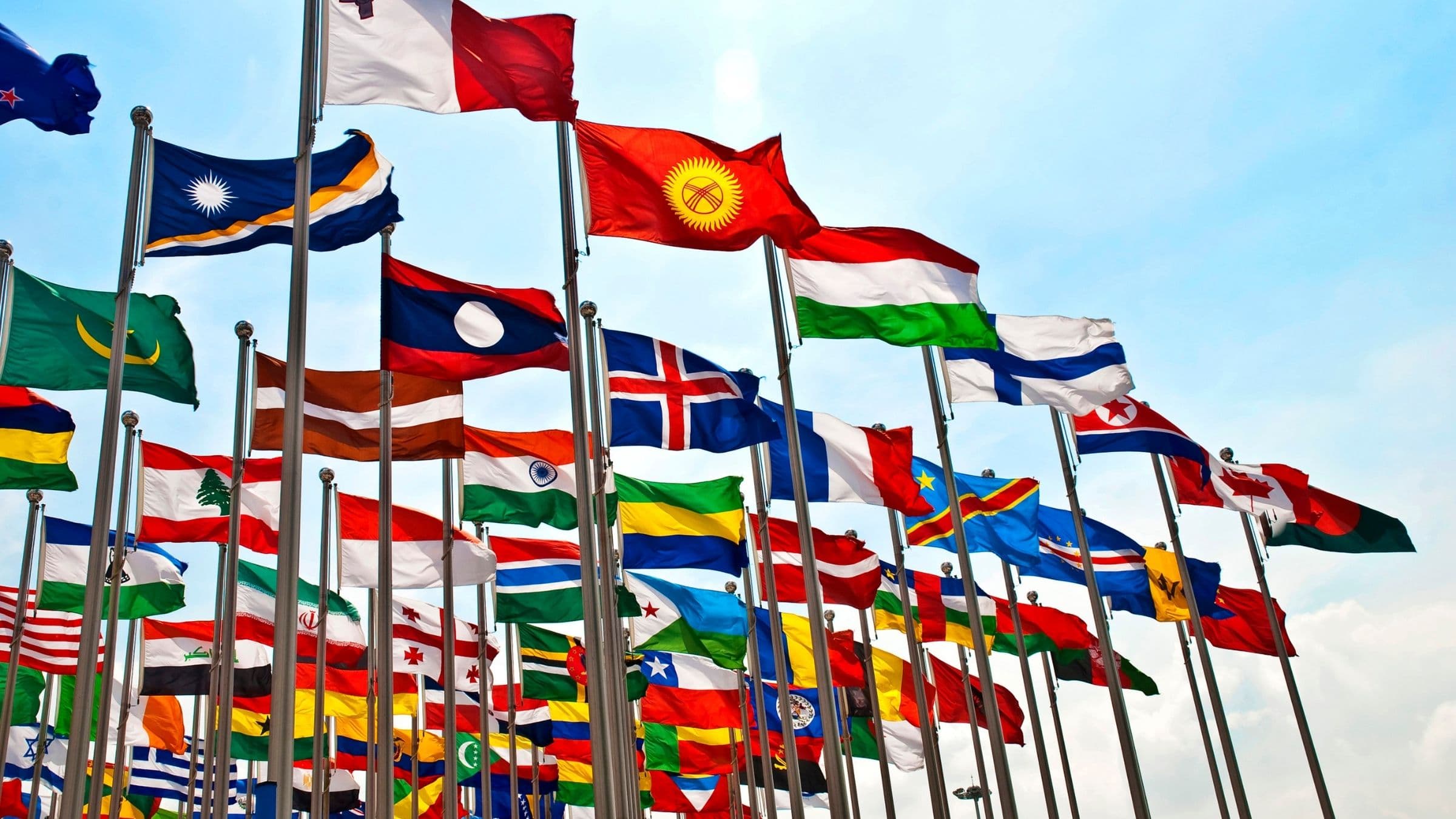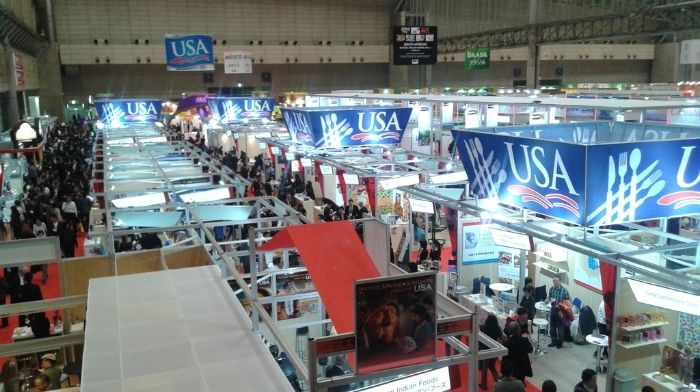
COUNTRY PROFILE
Discover more about the Peru market including overviews about the retail, foodservice, and food-processing sectors. Events, resources, and more are linked throughout the profile.

4th
largest market in South America for U.S. processed food product exports

$228.8 Million
total imports of U.S. processed foods

6th
Peru is the sixth-largest economy in Latin America
Focus Economics reports that Peru boasts the sixth-largest economy in Latin America, with a gross domestic product (GDP) of around US$240 billion in 2022. It is classified as an upper-middle-income economy by the World Bank, though GDP per capita ($6554) is still below the Latin American average ($10,168). Peru’s economy experienced significant growth in the decade leading up to the pandemic, often exceeding 4% year on year. However, the economy saw a double-digit contraction in 2020, and eked out soft growth in 2022 and 2023 below the Latin America average, weighed on by socio-political instability. GDP growth was 2.6% in 2022 but dropped to an anemic 0.8% in 2023 and is forecast to grow at 1.9% in 2024.
Peru’s economy is characterized by its reliance on natural resource exports, particularly mining, as well as a growing services sector. Peru is the world’s second-largest copper producer and is also an important producer of gold and zinc. That said, mining activity has been periodically disrupted in recent years by protests by local communities; these protests are also weighing on investment in the sector.
The Congress of the Republic of Peru is highly fragmented, with dozens of political groupings enjoying parliamentary representation, making policymaking difficult. Moreover, Congress has in recent years frequently removed sitting presidents; the country has seen five presidents since 2020. This is hampering structural economic reforms and holding back investment. In addition to the political instability, the Peruvian economy faces challenges including social unrest, a weak education system, and exposure to fluctuations in commodity prices and vulnerability to extreme weather events—including the El Niño climate phenomenon, which tends to bring heavy rains.
Peru still holds significant potential for growth, given its growing consumer market, abundant natural resources, attractiveness as a tourism destination and large web of trade agreements. Economists’ consensus is for growth to return to rates above the regional average in the coming years, though the economy will remain restrained by political dysfunction.
Peru’s population was 32.4 million in 2023 (CIA World Factbook Est.). The country has added 5.8 million people since 2000 but the rate of growth is slowing. The population is expected to be about 36 million in 2030. The median age was 30.1 years in 2023 – up 7.4 years since 2000. It should rise to 34.3 years by 2030. More than half of all Peruvians live near the coast, most of them in Lima. Only around 13% of the total population lives in the country’s vast region of rainforests.
USDA’s Office of Agricultural Affairs (OAA) in Lima, hereinafter referred to as FAS Post Lima, reports that Peru’s food market has been impacted by other externalities, in some cases related to the pandemic. Disruptions in supply chains, price spikes of raw commodities, volatile exchange rates, and inflationary pressures have all caused significant price increases for food products. During the height of the pandemic, food suppliers oriented their strategies towards affordable and bulk categories, such as private label, to offset price increases. Even though parts of this strategy remain in place, consumption in 2022 has trended downward, which is unlikely to change if international and local issues continue.
Peru is a member of several bilateral and multilateral trade agreements that have opened new markets for its exports and increased demand for imported goods. This openness to international trade and Peru’s growing middle class has transformed domestic food market channels. Among Peru’s trade agreements is the U.S. – Peru Trade Promotion Agreement (PTPA) which offers multiple opportunities for U.S.- origin food and agricultural product exports to Peru. The demand for U.S. consumer-oriented foods has steadily grown since the implementation of the PTPA in 2009, reaching $340 million in 2021, a record value for this category.
Chile, Colombia, Mexico, and Peru are all members of a trade agreement known as the Pacific Alliance. The treaty has removed tariffs on 90% of their merchandise trade. Peru is a member of the 11-member Comprehensive and Progressive Agreement for Trans-Pacific Partnership (CPTPP) which was formally created in March 2018. The CPTPP replaces the abandoned Trans-Pacific Partnership, and excludes the U.S.
The bilateral and multilateral trade agreements have opened new markets for its exports and increased demand for imported goods. This openness to international trade and Peru’s growing middle class has transformed domestic food market channels. The number of commercial centers in Peru increased from seven in 2000 to 82 in 2019.
Peru also ranks fourth as a market for U.S. processed food exports. In 2022 Peru imported US$292.4 million, a modest decline of 2%. In 2023 U.S. processed food exports to Peru declined dramatically to US$228.8 million, down 22%. That equates to US$63.6 million which adds to the U.S. trade deficit in food and agricultural products.
Top processed food exports from the U.S. to Peru in 2023 included:

$10.6 Billion
estimated total retail sales in the packaged food market in 2023

35.1%
growth rate of retail sales in the packaged food market since 2019

19.1%
expected growth rate of packaged food by 2028
According to Euromonitor, retail sales in the packaged food market in Peru had been estimated to reach US$10.6 billion in 2023, making it the fifth largest in South America. That also represents a growth rate of 35.1% or US$2.7 billion since 2019. The forecast for growth in this market is also promising. By the year 2028, the retail sales in the packaged food market in Peru is expected to reach US$13.5 billion, a growth rate of 19.1%, or US$2.1 billion from 2024. High growth products in the forecast include:
FAS Post Lima reports that the food retail industry’s estimated sales reached US$25 billion in 2022, up 2.7% from 2021. The modern channel was able to maintain sales during the first half of 2022 but declined towards the second half due to a volatile social and political situation. The three major supermarket chains in Peru continued to adapt to online outlets to keep up with sales. The growth was based on basic staple categories and the opening of formats aimed at low-income target audiences.
There are three main supermarket chains in Peru: Cencosud: (Wong and Metro), Saga: Fallabella (Tottus) and Supermercados Peruanos: (Vivanda and Plaza Vea). Supermercados Peruanos (SPSA) is accelerating the opening of more discount market format stores named Mass, especially in the provinces, and there are nearly 700 of these stores in Peru.
In the same line, Cencosud’s cash and carry format (Metro) received a higher sales jump during the January-July period in 2022. Tottus Hypermarket, from Falabella Group, was able to open at least eight more Tottus supermarket and Hiperbodega Precio Uno (HPU) hard-discount format stores respectively, which also cater to the lower-income segment. HPU provides a mix of products, like a hypermarket, but in a smaller format. Its price competitiveness is due to more private label products. There are 27 HPUs so far and the majority (21) are outside of Lima. The market includes 319 conventional supermarkets and superstores (196 of which are in Lima).
The convenience store segment started in 2015 and become a key growth strategy for retailers due to its small size and rapid adaptation to consumers’ needs. These formats were gaining market share within the modern channel and posed strong competition for supermarket chains. The adaptation during the pandemic was challenging since convenience stores had to redefine the mix of products towards basic food products. Towards the end of 2020 and beyond, the relaxation of health restrictions was instrumental to the recovery of sales.
TAMBO is still the most prevalent convenience store, having more outlets than competitors. Others include OXXO, Repshop, Listo, and other independent stores. Last year, Cencosud entered this segment, opening its first convenience store SPID. This is part of an aggressive expansion plan by the Chilean company based on the establishment of express formats. There are around 1,000 convenience store locations among these brands in Peru. Beverages and ready to eat products are the main categories sold in this channel.
FAS Post Lima reports that U.S. products with high sales potential in this sector include cheese, chocolate and confectionery, food preparations, red meats, poultry meats, fruit and vegetable juice, bread, pastry and cookies, soups and broths, sauces, and tree nuts.

5.3%
growth of the hotel and restaurant sector in 2023

17%
imported food and ingredients account for approximately 17% of the food served by the hotel and restaurant sector

40%
retail venues account for 40% of total foodservice sales
FAS Post Lima reports that The Peruvian National Institute of Statistics (INEI) reported a continuous growth of the accommodation and restaurant sector during 2022 resulting in 23.2 % increase with respect 2021. The ease of health related COVID-19 restrictions as of March 2022 improved ease of movement in public and consumers began dining out with greater frequency. Furthermore, Peru’s opening once again to international tourists generated a higher hotel occupancy directly improving the sector’s performance. However, there is still a reported sales gap that would need to be closed before a full recovery to pre-pandemic sales. Different sources and contacts envision that this gap catching up with pre-pandemic sales may finally close in 2025.
This year, the hotel and restaurant sector grew 5.3% during the first half of 2023 compared with 2022, but still lower than 2019. The restaurant sector showed a favorable performance due to higher traffic of consumers at independent and chain restaurants of different categories such as fast-food chains, and more gastronomic events during this period. As the post-pandemic economic recovery was underway, however, the tourism and hotel sector were hit by nationwide social unrest from political protests, in addition to a climatic phenomenon, the Yaku cyclone.
A large part of the Ministry of Foreign Trade and Tourism (MINCETUR) strategy is also rooted in the culinary sector. Peru’s gastronomy has earned substantial acclaim as a cultural and gastronomic destination over the past decade and is consistently recognized as the “World’s Leading Culinary Destination” by the World Travel Awards since 2012 (excluding 2020). Moreover, ‘Latin America’s 50 Best Restaurants in 2022’ highlighted four Peruvian restaurants among the top ten.
The influx of international visitors in 2022 significantly boosted sales growing 46% with respect 2021. While nearly 4.5 million international tourists visited Peru in 2019, the number dropped to roughly 2 million 2022. This decline had a notable impact on restaurants, as foodservice accounts for up to 18% of total foreign tourist revenues. The hotel occupancy rate in Peru also experienced improvement, driven by domestic tourists’ gradually resuming travel throughout 2022. Although the demand was primarily concentrated in Lima, hotel demand in specific provinces rebounded to almost pre-pandemic levels.
High-end hotels, specifically four- and five-star establishments, represent a niche market for U.S. food products. These hotels offer imported food products, with imported food and ingredients accounting for approximately 17% of the food served. It is worth noting that half of all Peruvian high-end hotels are in Lima. Hotels in Peru are actively developing strategic alliances with international chains and major investor groups. Beef, pork, wine, distilled spirits, and frozen products are potential categories for further development within this channel.
In early 2022, the government finally lifted all restrictions on restaurant traffic, allowing them to gradually resume operations. As a result, consumers returned to dining out and other in-person dining-type activities, which benefited the sector, leading to 21% growth in 2022. Additionally, government stimulus programs such as Reactiva Per, that provided liquidity to company’s affected COVID-19 sanitary restrictions, have made significant progress in improving the sector. However, the sector still faced difficulties in fully recovering from the pandemic’s impact, as well as dealing with rising inflation and exchange rates. To adapt to inflationary pressures, restaurants had to increase prices and, in some cases, reduce portion sizes.
Before the pandemic, restaurants were one of the fastest-growing sectors in the economy. This growth was attributed to the better performance of specific segments, including fast food and standalone restaurants. High-end restaurants, casual dining eateries, coffee shops, and fast-food chains represent niche market opportunities for U.S. Agrifood exporters. These establishments account for 15% to 25% of all imported food products. The most frequently imported food ingredients include sauces, meats, processed fruits and vegetables, cheeses, and specialty products such as beef, pork, wines, and spirits.
The number of foodservice outlets In Peru has grown rapidly due to the expansion of shopping centers in Lima and other cities located in the provinces, where the cost of real estate is significantly lower than in Lima. Retail venues account for 40% of total foodservice sales. Although retail penetration in Peru is still low compared to other countries in the region, growth in this environment is expected to continue. Chained brands are focused on opening new outlets.
While food franchise brands expressed interest in entering Peru, projects were put on hold due to the pandemic. However, the return of well-known U.S. brands, including Taco Bell, Little Caesars, and IHOP, presents promising areas for future growth. For instance, Subway managed to open three additional outlets last year, including a franchise outside of Lima, a clear demonstration of expanding economic opportunity.
FAS Lima reports that U.S. products with good sales potential in this sector include cheese, beef and offal, poultry meat, nuts and almonds, wine, sauces, pork meat and distilled spirits.

28%
of the industrial GDP in Peru comes the food industry

$1.3 Billion
imports of food processing ingredients to Peru in 2022

3rd
the U.S. is the third largest supplier of ingredients to Peru
FAS Post Lima reports that Peru’s food processing industry is a dynamic sector of the national economy. The food industry in Peru accounts for almost 28% of the industrial GDP and the gross value added reached US$8.6 billion by the end of 2022. Its growth is directly linked to the development of the food retail and foodservice sectors. Food product manufacturers source both domestic and imported product ingredients. Local processed food products cover 70% of the market demand.
Over 90% of the industry is comprised of micro companies. Large companies represent only 1.8% of the sector. According to the National Industry Society (SNI), in 2022, Peru’s food sector contracted 3.9%. The categories with lower performance included processed seafood (canned fish), dairy products, animal fats, and plant oils. On the other hand, other areas grew from 2021 levels, such as processed meat, processed fruits and vegetables, pasta, and confectionary goods. In the same line, the beverage sector also had a positive performance; growing 10% based on a recovery of beer and bottled water sales.
Peru’s food market has been impacted by several international externalities. Disruptions in supply chains, price spikes of raw commodities, volatile exchange rates, and inflationary pressures have all caused significant price increases for food products. Following the easing of pandemic restrictions in early 2021, food manufacturers prioritized categories with higher demand, especially for the traditional channel (corner stores and wet markets).
Food product manufacturers in Peru source both domestic and imported product ingredients to meet consumer demand for quality food at affordable prices. These manufacturers are successfully tailoring products to meet different segments of consumer demand.
U.S.-origin food processing ingredient exports to Peru reached US$272 million in 2022, an increase of 38% from 2021. The rise is due mostly to increased wheat and powdered milk exports, 54% and 59% higher, respectively. Other categories also contributing to this increase were skim milk powder, almonds, flour/pellets of meat, edible mixtures, products consisting of natural milk constituents, animal or vegetable fats, peptones, and enzymes.
Imports of food processing ingredients to Peru totaled US$1.3 billion in 2022. The U.S. is the third largest supplier of ingredients, with a 21% market share. These ingredients are largely made up of wheat, milk powder, processed meat products, animal fats, and almonds. Canada is the largest supplier, with 31% of market share and led by wheat exports. Argentina holds the second position, accounting for 22% of market share. Argentina’s exports are led by wheat and skimmed powdered milk.
FAS Post Lima reports that products with high potential in this sector include boneless beef, protein concentrates, flour meat meals and vegetable fats, wheat, concentrated milk, enzymes and preparations, mixtures of edible oils and fats, almonds, boneless frozen pork, mixtures of odiferous substances, vegetable saps and extracts, whey and modified whey, preparations of semola, starch flour or malt extract, hop cones, and roasted malt.

